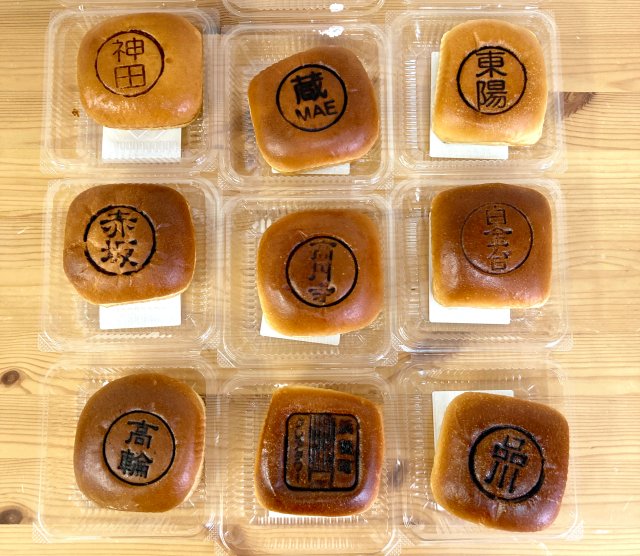
Can Mr. Sato collect them all or will he wilt beneath the early summer sun trying?
Stuffed with sweet red bean paste and consisting of a soft, doughy exterior, anpan is a timeless classic and a ubiquitous feature in bakeries across Japan. The baked sweet is so popular that convenience store chain Daily Yamazaki has offered a special luxurious version of the pastry stuffed with whipped cream. But what roused SoraNews24 poster man Mr. Sato‘s attention wasn’t the generous helping of red bean nor his temptation for sweets, but how Daily Yamazaki’s luxurious anpan were stamped with the name of the local area they were sold in.
According to Mr. Sato’s research, there were over 350 different Daily Yamazaki locations across the country which participated in this tradition, and while unfortunately it would be tall order to collect them all, Mr. Sato decided to test himself by trying to gather all the ones in Tokyo proper, which narrows down over 350 anpan to just nine anpan. Was this an insurmountable task, however? Did Mr. Sato and his glutes have what it takes to trek across Japan’s capital for these anpan? There was only one way to find out.
Mr. Sato began his journey at 9:00 a.m. sharp. After all, the early bird gets the worm, or in this case, the early man gets the anpan. His residence was already relatively close to his first destination: Koenji Station. Since it was past the morning rush hour, the convenience store workers were busy re-stocking and preparing the rest of the day’s fare, but Mr. Sato found what he sought immediately… the first anpan!
Only a few were displayed on the table, and Mr. Sato reverently grabbed one, acknowledging it as the first anpan of his roundup. Embellished with “Koenji” in bold print, Mr. Sato marked the time for memory’s keepsake—9:15 a.m.—before moving onto his next destination.
From Koenji Station he took the Tokyo Metro Tozai line to Toyocho Station. As it was his first time on this side of Tokyo, Mr. Sato couldn’t help but gawk at the variety of shops lining the station front. It didn’t take him long to find the nearest Daily Yamazaki and glean the convenience store’s offerings.
There they were! Mr. Sato relished in finding the second anpan he needed for his roundup, especially with how smoothly it went, despite not having been in Toyocho before. He marked the time of purchase down: 10:22 a.m. Two down, and seven more to go.
Next, Mr. Sato set his sights on Kuramae. Compared to the previous two stops, getting to Kuramae Station took a little more time. He got back on the Tozai line and headed to Nihonbashi Station, transferring to the Tokyo Metro’s Asakusa line, and finally reached Kuramae Station. It wasn’t too difficult to find the Daily Yamazaki perched right outside the station’s front.
Compared to the other two anpan Mr. Sato bought so far, this anpan featured the latter part of “Kuramae” in uppercase roman characters. Mr. Sato thought it was a stylish look, but besides this difference, here the anpan offering was pretty much the same: sweet red bean paste and whipped cream. Mr. Sato thought about how great it would be if different areas had different flavors, but maybe the logistics of such an endeavor was too much for Daily Yamazaki? Alas, he must accept this anpan as it is, and at 10:53 a.m. he picked up his third anpan.
Moving on, Mr. Sato checked his list and decided to head to Kanda for his fourth anpan. From Kuramae Station he rode on the Asakusa line to Ningyocho Station before transferring to Tokyo Metro’s Hibiya Line for Akihabara. As Kanda and Akihabara neighbor each other, it was a brisk walk to the area’s Daily Yamazaki, except to Mr. Sato’s surprise, there wasn’t just one Daily Yamazaki but three, and they all stood on opposing street corners from one another. This was probably the only place in the entire country where three Daily Yamazakis could be sighted in close proximity to each other—a Yamazaki traingle if you will.
Walking inside, he searched the store until he found it: the Kanda anpan. There was an ample number of them, and he felt tempted to ask the staff about how popular they were, but restrained himself. There were more anpan to buy and it was 11:15 a.m. by the time he left the shop with the fourth anpan in tow.
For the fifth anpan, it was time to head to Shinagawa. Mr. Sato walked back to Akihabara Station and took the Keihin-Tohoku Line straight to Shinagawa. Up until now, all the Daily Yamazakis he’d visited had been relatively close to train stations, but the Shinagawa Daily Yamazaki was more elusive, almost 850 meters, or half a mile, away from the station entrance. Though it wasn’t that bad looking back on it, Mr. Sato found himself grumbling through the 12-minute walk.
His mood picked up, however, once he reached the Daily Yamazaki and began searching for the Shinagawa anpan. With the number of anpan available for purchase, Mr. Sato wondered if it was an unpopular item after all. Was he signing himself up for a bad time on the toilet? Before he could introspect further, he grabbed one of the anpan with a very bold “Shinagawa” marked on it at exactly 11:58 a.m.
Without stopping for lunch, Mr. Sato continued his journey for anpan. Walking back to Shinagawa Station, he boarded the Keikyu Main Line for Takanawa, getting off at Sengakuji Station. This specific part of his anpan roundup was probably the longest, and though his legs were starting to protest a little by all the walking, Mr. Sato held firm in his valiant quest and finally reached Takanawa’s local Daily Yamazaki.
To his great and pleasant surprise, the Daily Yamazaki at Takanawa didn’t just only offer anpan stamped with its name—there was also toast with “Takanawa” branded on the outer crust. Though he originally intended to buy only anpan, Mr. Sato thought it would be a huge waste not to buy the toast as well. Grabbing both baked goodies, Mr. Sato exited the Daily Yamazaki at 12:20 p.m. and beelined for his next stop.
▼ The bread was a bargain at 150 yen! (US$1.37)
More than halfway done but still hungry for more, Mr. Sato pressed on to Hamamatsucho’s Crea Tower, taking the Asakusa line to Daimon Station. The Daily Yamazakis so far had been your typical convenience stores—only one story and marked by cheerful yellow and orange stripes. But the Daily Yamazaki in Hamamatsucho’s Crea Tower was no ordinary place: it spanned at least 3 floors.
In this “Super Yamazaki,” Mr. Sato looked for his anpan while distracted by the store’s pretty and stylish interior. It definitely felt like a place where slick businessmen went to relax while eating a quick meal, and the Hamamatsucho anpan was no exception. Rather than simply bearing the area’s name on its plush exterior, the anpan also had a tower-like imprint, much to Mr. Sato’s delight. He picked up his seventh anpan right as it became 12:38 p.m.
Close to finishing up his anpan run, Mr. Sato backtracked a little, passing Sengakuji Station on the Keikyu Main Line for Takanawadai Station. This time the anpan he was specifically looking for was in Shirokanedai, and Mr. Sato noticed the plethora of bakeries lining the street to Daily Yamazaki. If he got on a bike and circled the area, he would count at least four bakeries in proximity.
Here as well the anpan was stacked into small plastic containers, except a small placard caught Mr. Sato’s all-seeing eyes: Shirokanedai anpan was the most popular item for patrons at this convenience store. So people did like these anpan! Mr. Sato grabbed his eighth anpan and checked his watch: 1:01 p.m.
Now it was time for the last and ninth anpan. Mr. Sato got on the train to Gotanda Station and transferred to Shibuya Station via the Yamanote line. From Shibuya, he took the Tokyo Metro Ginza line to Akasaka-Mitsuke Station. Through the entire ride, a bittersweet feeling swept over him. His anpan collection would soon be done, and while his legs would probably thank him after getting home, in a way, he didn’t want to stop here, though all things come to an end.
Finding the Akasaka anpan was a rather anticlimactic event—there was no elbowing other convenience store visitors out of the way for the final pastry, no strange convenience store layout to confuse him, nothing. It was more lacklustre than anything else as only three anpan were set out for purchase. Mr. Sato bought the final anpan for his collection at 1:36 p.m, though his mood lightened after examining how the brushstrokes for “Akasaka” on the anpan were actually done in a pretty eye-catching manner.
With all nine anpan gathered, it was time to close the curtains on this expedition. Including the time it took for Mr. Sato to arrive at SoraNews24 headquarters in Shinjuku, the entire anpan roundup spanned across five hours from 9:00 a.m. to 2:00 p.m. Mr. Sato emptied his bag of anpan and lined them up to see if there were any noticeable differences among them.
▼ Collect all 9 special anpans and perhaps you could awaken your inner Anpanman?
Frankly, all the anpan were pretty much the same in terms of flavor and size. They all fitted into his palm comfortably, and perhaps the only difference, if Mr. Sato had to look for one, was simply the names seared onto the anpan.
As he hadn’t eaten lunch yet, Mr. Sato decided since he had this generous helping of anpan, it only made sense to start eating them. He bit into the Koenji anpan—the first one he bought—and Mr. Sato savored the fluffy mix of sweet red bean paste and whipped cream. It wasn’t the sweetest pastry he’d ever eaten, but considering how he had eight more left to eat, that was probably for the better.
And honestly, as Mr. Sato dug into his lunch meal of sugar and plushy bread, it was nice to walk around town and visit areas he had never been to before. He reckoned it wouldn’t hurt to go back and explore more thoroughly, because you never know what great, unexpected surprises are in store when it comes to a big city like Tokyo.
Photos © SoraNews24
● Want to hear about SoraNews24’s latest articles as soon as they’re published? Follow us on Facebook and Twitter!
[ Read in Japanese ]
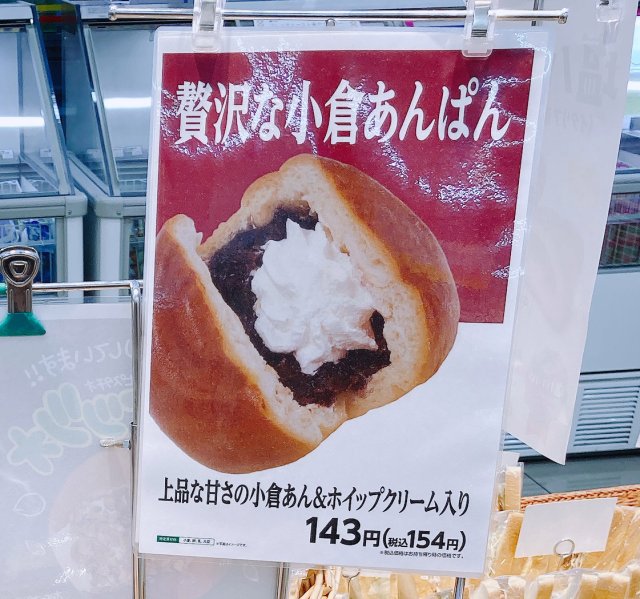
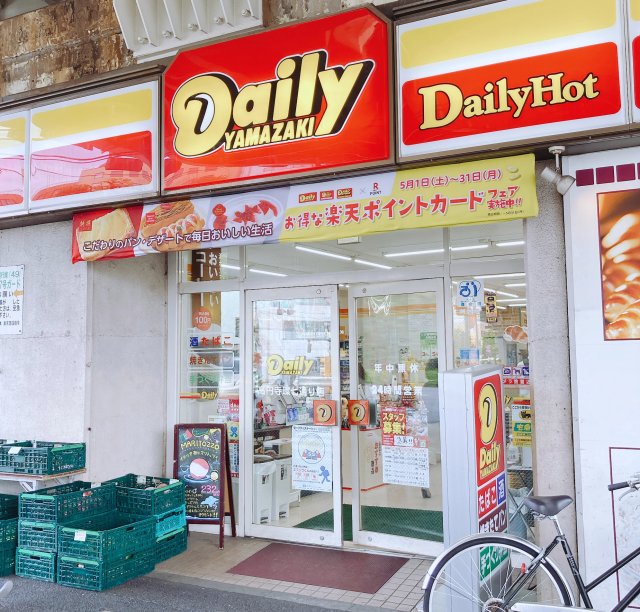
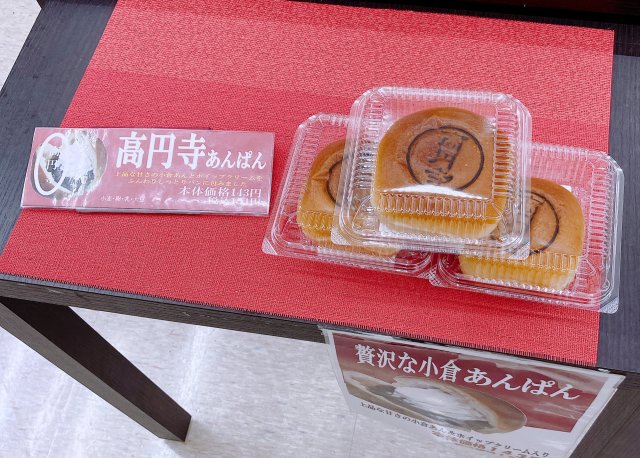

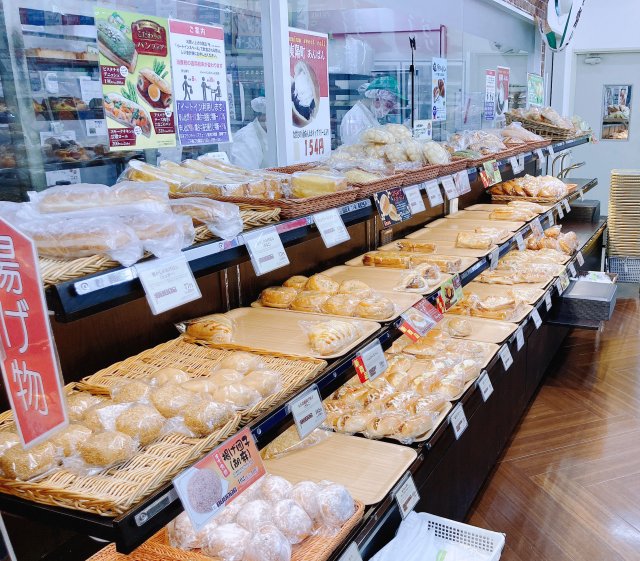
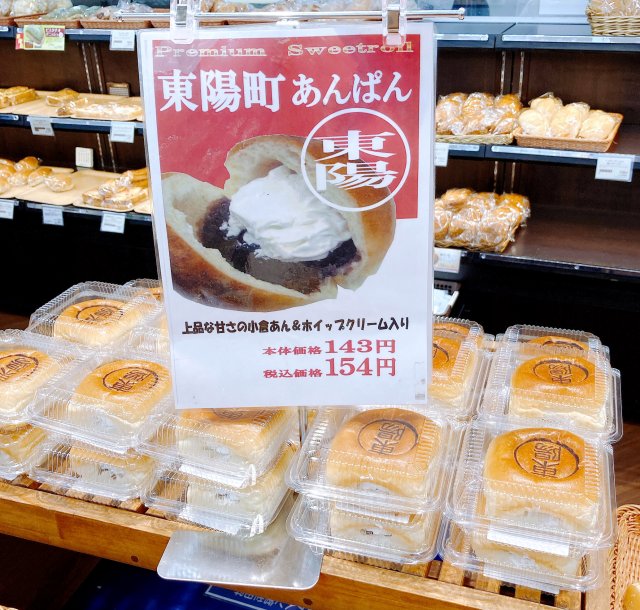
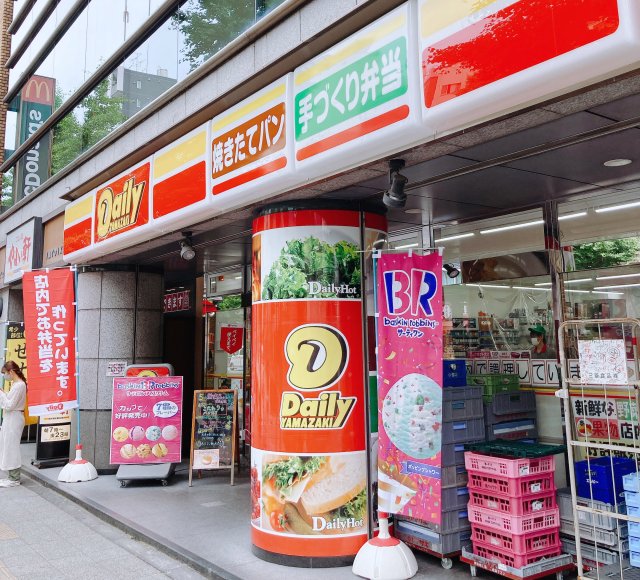
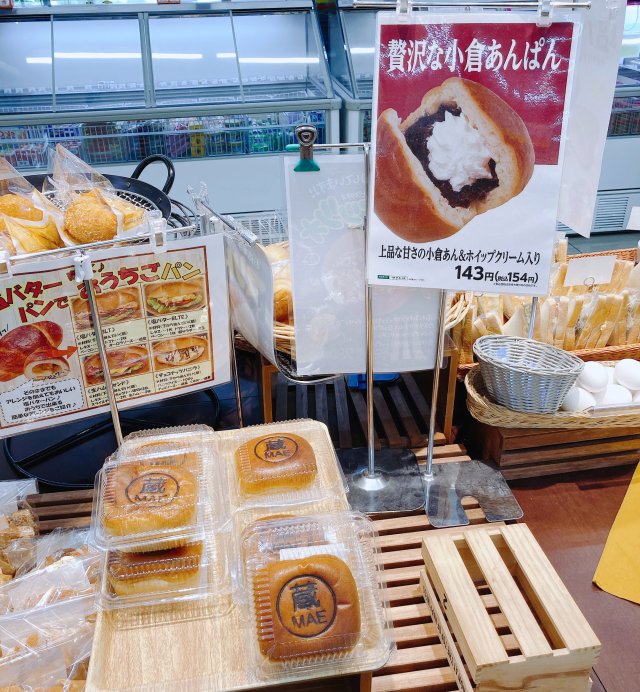
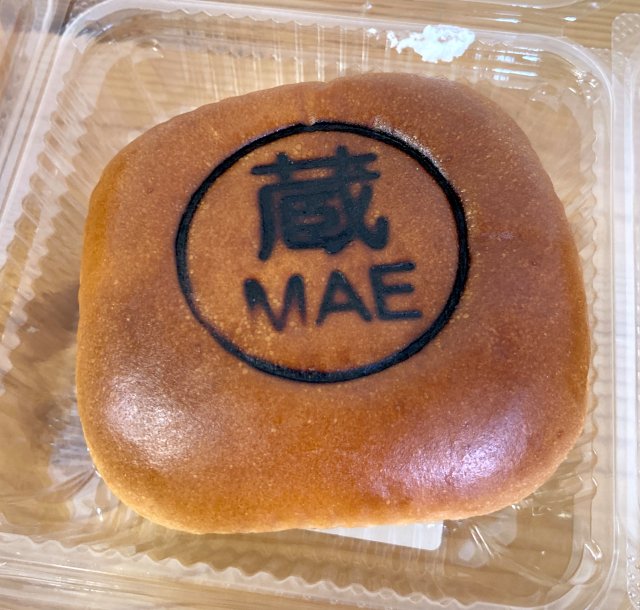

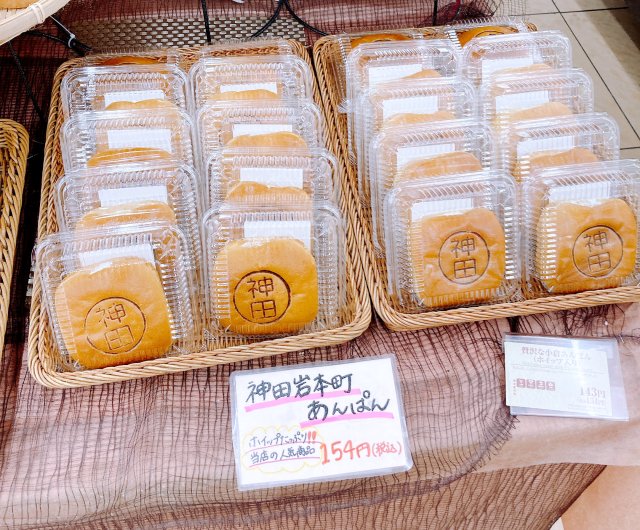
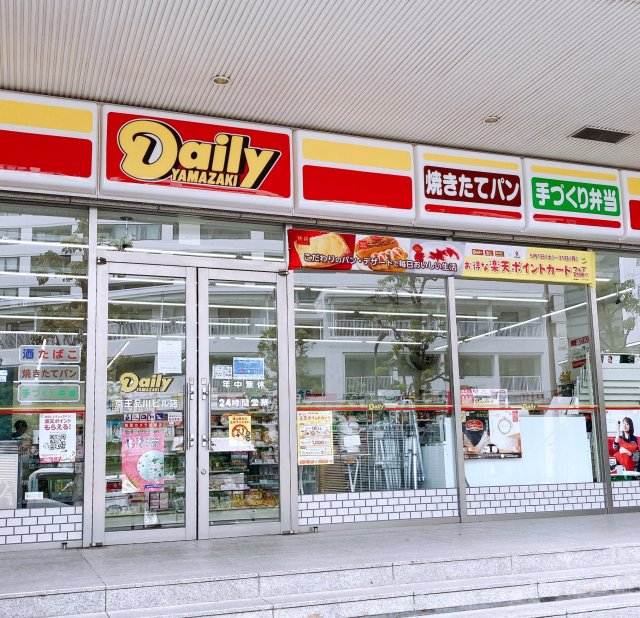
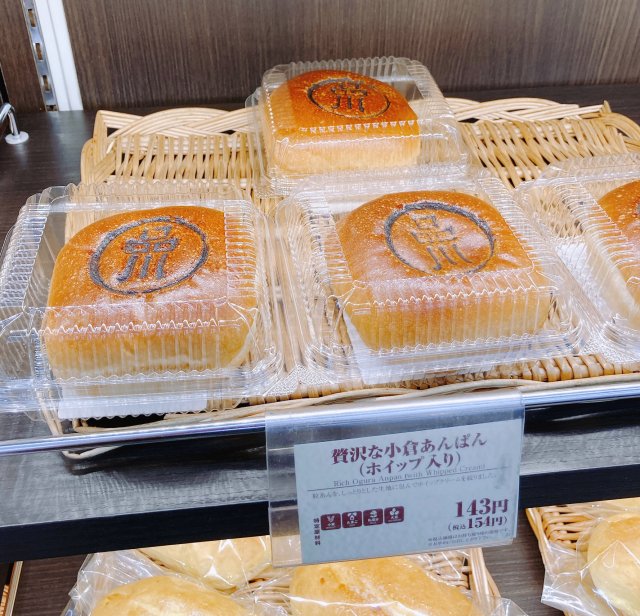
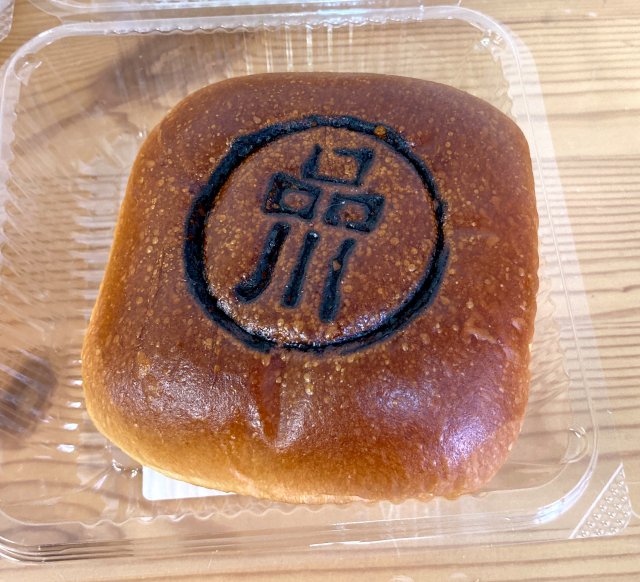
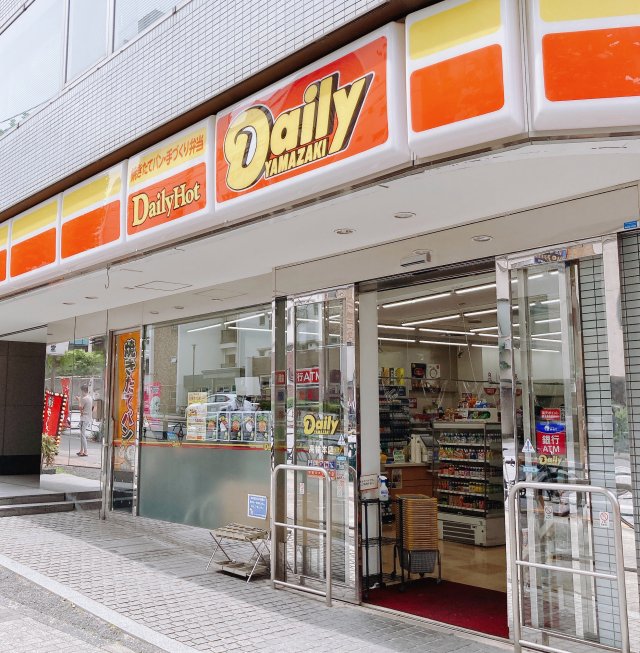
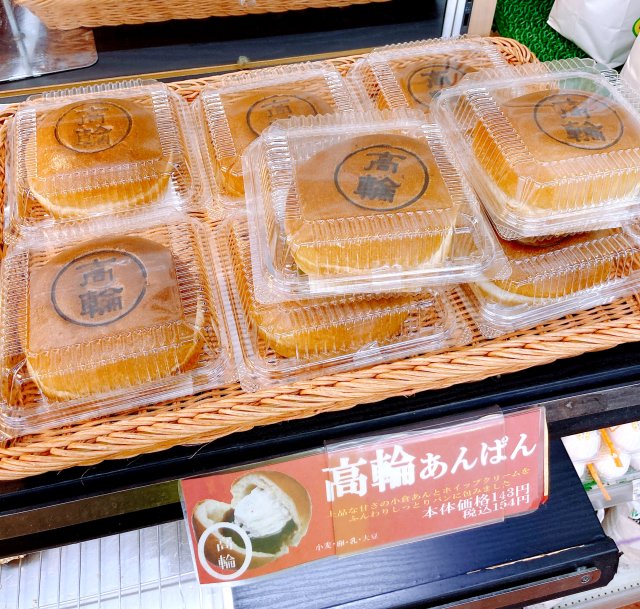
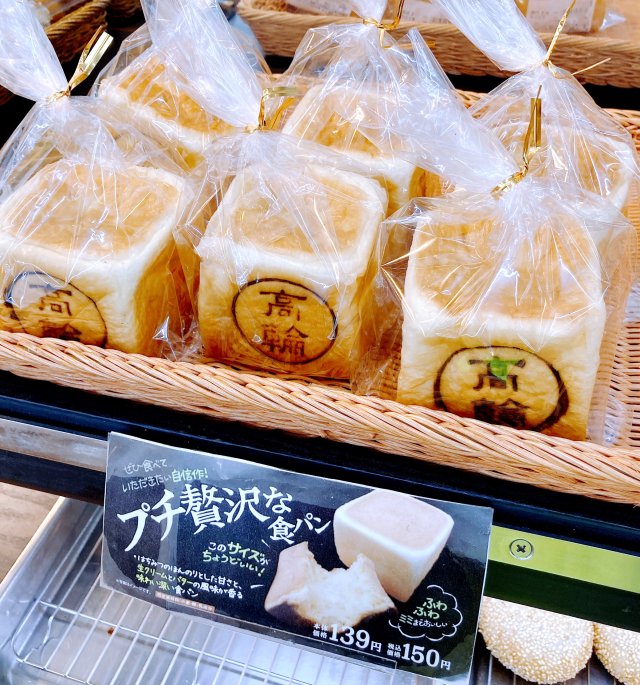
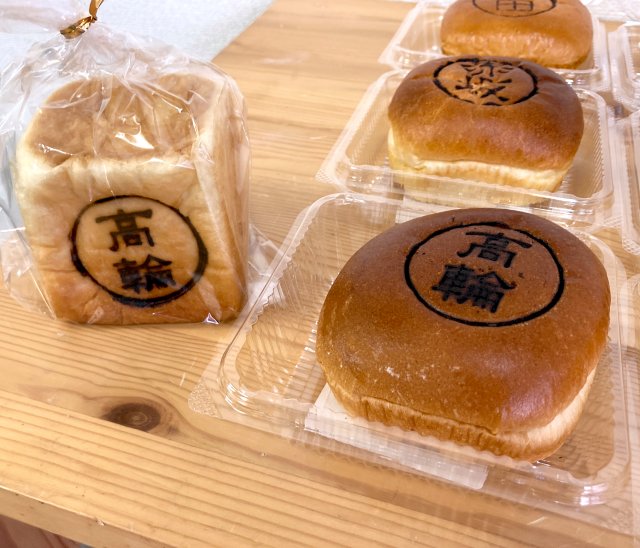
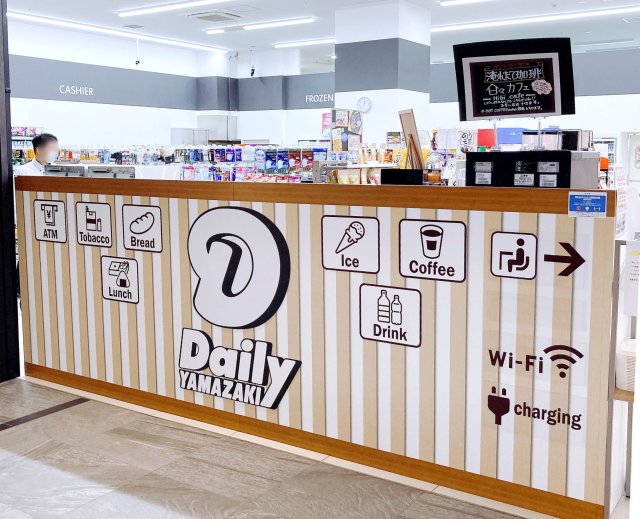
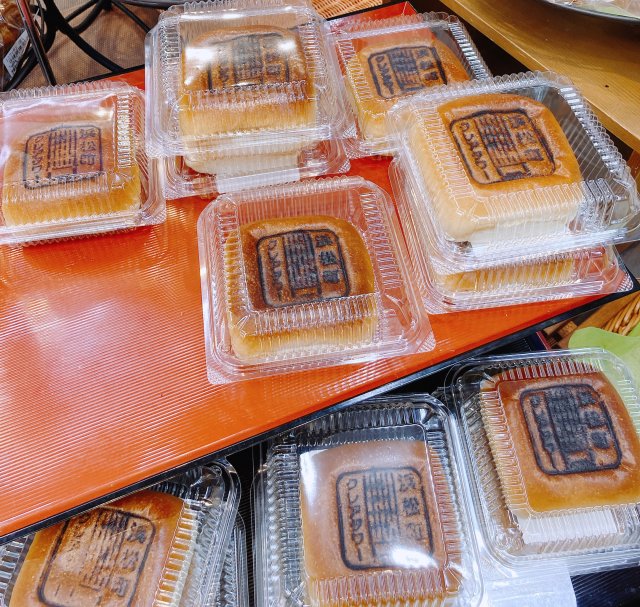
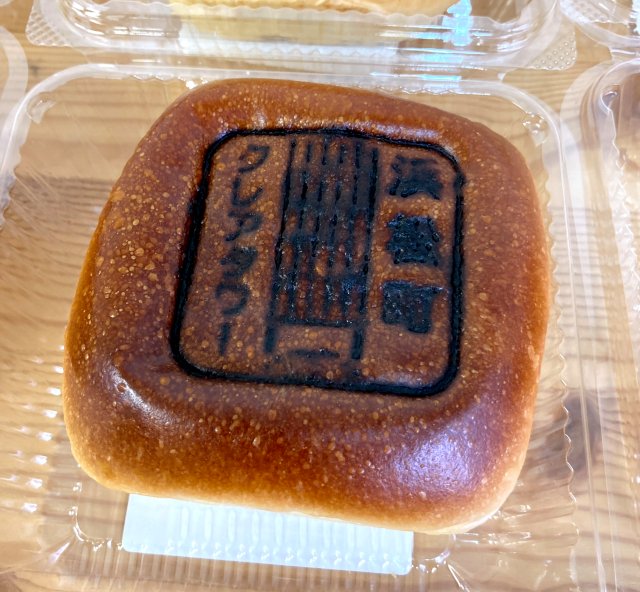
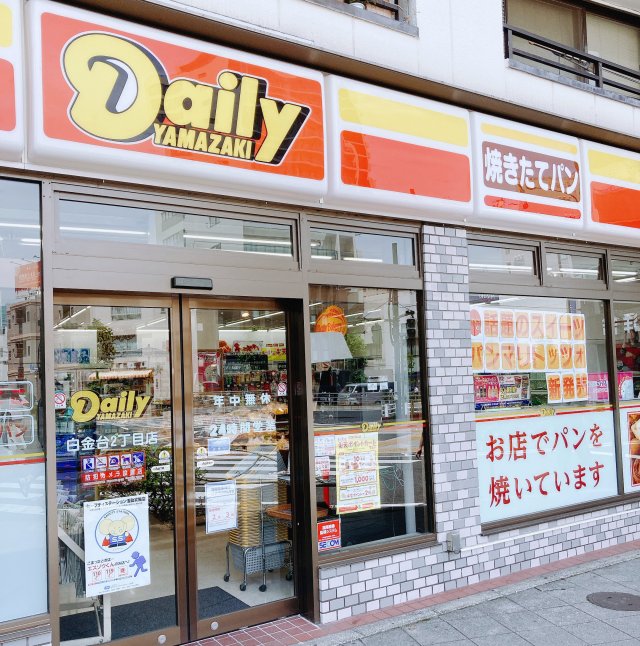
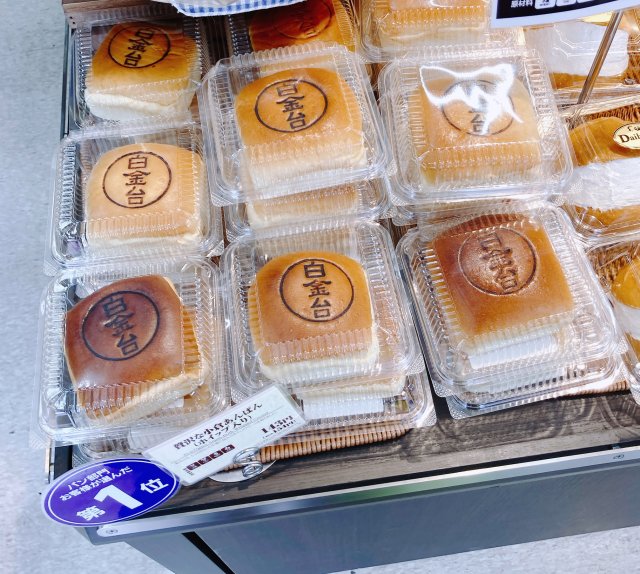
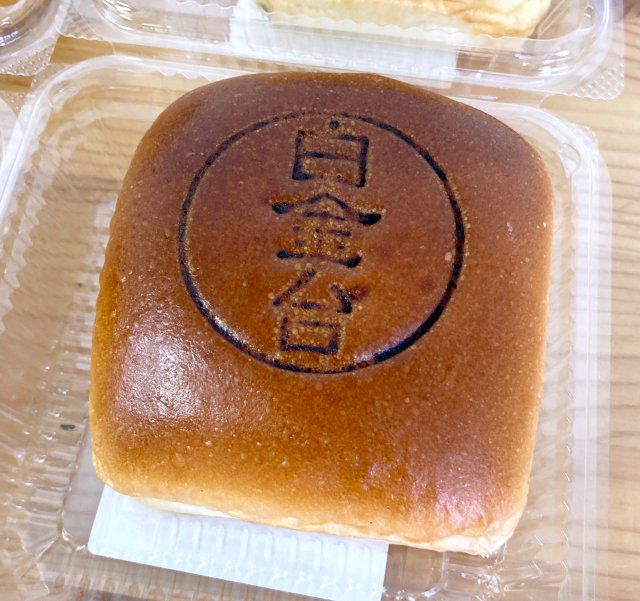
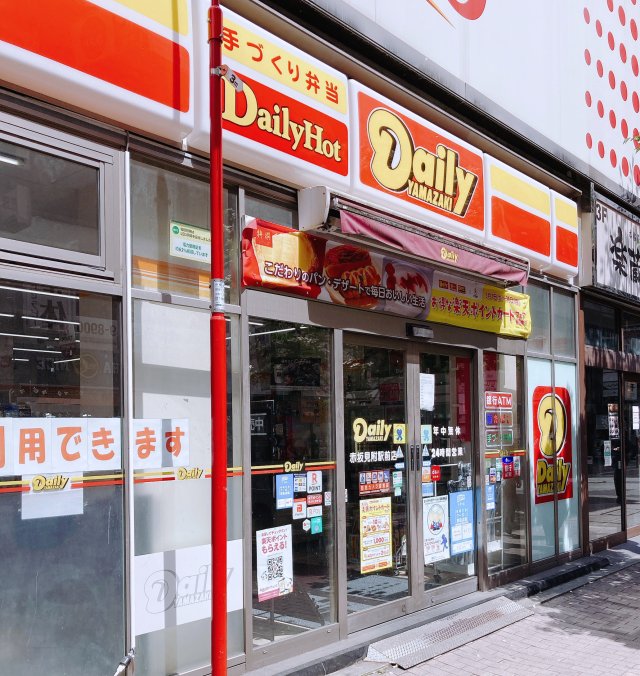
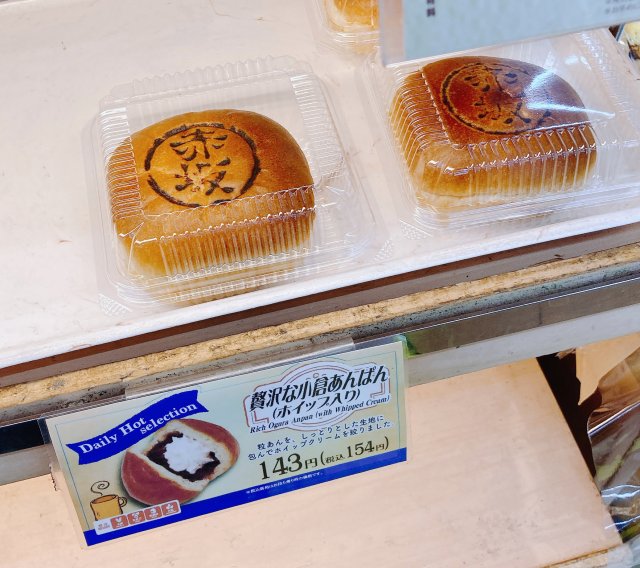
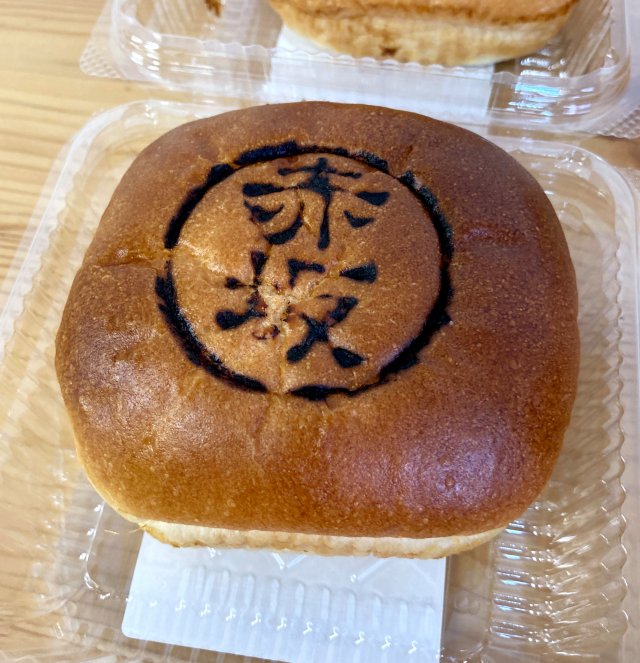
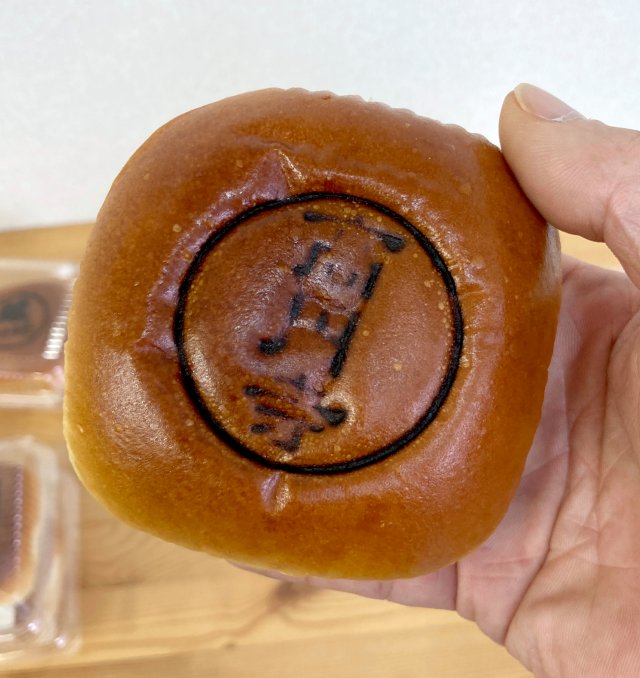
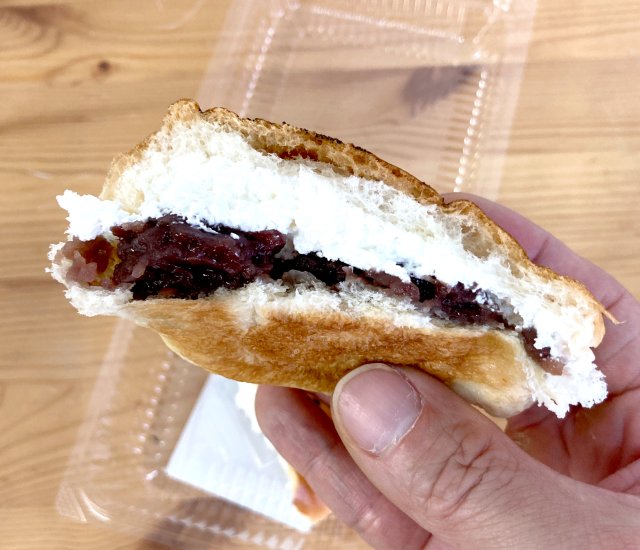
 Calling all fans of anpan! You can try 20 kinds of anpan at this specialty shop in Asakusa
Calling all fans of anpan! You can try 20 kinds of anpan at this specialty shop in Asakusa Mr. Sato stuffs himself at an all-you-can-eat bakery event and ascends to carb heaven【Pics】
Mr. Sato stuffs himself at an all-you-can-eat bakery event and ascends to carb heaven【Pics】 Curry Bread Cider: A drink with an unforgettable aftertaste【Taste Test】
Curry Bread Cider: A drink with an unforgettable aftertaste【Taste Test】 Be Mr. Sato’s online friend, and he might take you to dinner, like he did with these foreign fans
Be Mr. Sato’s online friend, and he might take you to dinner, like he did with these foreign fans Behold the fluffiest rice omelet in Tokyo…possibly the world!
Behold the fluffiest rice omelet in Tokyo…possibly the world! How to order snacks on a Shinkansen bullet train in Japan
How to order snacks on a Shinkansen bullet train in Japan Burger King Japan suddenly adds Dr. Pepper and Dr. Pepper floats to its menu nationwide
Burger King Japan suddenly adds Dr. Pepper and Dr. Pepper floats to its menu nationwide New Nintendo Lego kit is a beautiful piece of moving pixel art of Mario and Yoshi【Photos】
New Nintendo Lego kit is a beautiful piece of moving pixel art of Mario and Yoshi【Photos】 Hello, cosmetics! Clinique teams up with Hello Kitty this summer for first-time collaboration
Hello, cosmetics! Clinique teams up with Hello Kitty this summer for first-time collaboration Demon Slayer: Kimetsu no Yaiba gets new roller coaster attractions and food at Universal Studios Japan
Demon Slayer: Kimetsu no Yaiba gets new roller coaster attractions and food at Universal Studios Japan 11 different ways to say “father” in Japanese
11 different ways to say “father” in Japanese Kyoto tea merchant’s matcha parfait ice cream bars: The desserts we’ve been waiting 187 years for
Kyoto tea merchant’s matcha parfait ice cream bars: The desserts we’ve been waiting 187 years for East meets West in the Pacific-centered version of the world map
East meets West in the Pacific-centered version of the world map What do you eat when you catch a cold? We asked 11 of our Japanese reporters
What do you eat when you catch a cold? We asked 11 of our Japanese reporters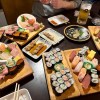 Shinjuku izakaya’s all-you-can-eat-and-drink plan is one of Tokyo’s best secret cheap eats
Shinjuku izakaya’s all-you-can-eat-and-drink plan is one of Tokyo’s best secret cheap eats Nintendo history you can feel – Super NES, N64, and GameCube controllers become capsule toys
Nintendo history you can feel – Super NES, N64, and GameCube controllers become capsule toys “The most Delicious Cup Noodle in history” – Japan’s French Cup Noodle wins our heart【Taste test】
“The most Delicious Cup Noodle in history” – Japan’s French Cup Noodle wins our heart【Taste test】 Starbucks releases a cute Frappuccino and Unicorn Cake…but not in Japan
Starbucks releases a cute Frappuccino and Unicorn Cake…but not in Japan Kyoto Tower mascot termination reveals dark side behind cute Japanese characters
Kyoto Tower mascot termination reveals dark side behind cute Japanese characters McDonald’s Japan’s Soft Twist Tower: A phantom ice cream only sold at select branches
McDonald’s Japan’s Soft Twist Tower: A phantom ice cream only sold at select branches Yabai Ramen: What makes this Japanese ramen so dangerous?
Yabai Ramen: What makes this Japanese ramen so dangerous? Finally! Nintendo Japan expands Switch 8-bit controller sales to everybody, Online member or not
Finally! Nintendo Japan expands Switch 8-bit controller sales to everybody, Online member or not Japanese government wants to build luxury resorts in all national parks for foreign tourists
Japanese government wants to build luxury resorts in all national parks for foreign tourists To combat declining birth rate, Japan to begin offering “Breeding Visas” to foreigners
To combat declining birth rate, Japan to begin offering “Breeding Visas” to foreigners 10 things you should buy at 7-Eleven in Japan
10 things you should buy at 7-Eleven in Japan Studio Ghibli releases anime heroine cosplay dresses that are super comfy to wear
Studio Ghibli releases anime heroine cosplay dresses that are super comfy to wear Woman charged for driving suitcase without a license in Osaka
Woman charged for driving suitcase without a license in Osaka Studio Ghibli unveils My Neighbour Totoro miniature house model
Studio Ghibli unveils My Neighbour Totoro miniature house model Kyoto experiencing problems with foreign tourists not paying for bus fares, but not on purpose
Kyoto experiencing problems with foreign tourists not paying for bus fares, but not on purpose Fighting mild hunger with a Japanese soda that turns into jelly in the stomach【Taste test】
Fighting mild hunger with a Japanese soda that turns into jelly in the stomach【Taste test】 Studio Ghibli’s Howl’s Moving Castle tapestry unveiled in Japan for first time
Studio Ghibli’s Howl’s Moving Castle tapestry unveiled in Japan for first time McDonald’s new Happy Meals offer up cute and practical Sanrio lifestyle goods
McDonald’s new Happy Meals offer up cute and practical Sanrio lifestyle goods Sales of Japan’s most convenient train ticket/shopping payment cards suspended indefinitely
Sales of Japan’s most convenient train ticket/shopping payment cards suspended indefinitely Sold-out Studio Ghibli desktop humidifiers are back so Totoro can help you through the dry season
Sold-out Studio Ghibli desktop humidifiers are back so Totoro can help you through the dry season Japanese government to make first change to romanization spelling rules since the 1950s
Japanese government to make first change to romanization spelling rules since the 1950s Foreigner’s request for help in Tokyo makes us sad for the state of society
Foreigner’s request for help in Tokyo makes us sad for the state of society Ghibli founders Toshio Suzuki and Hayao Miyazaki contribute to Japanese whisky Totoro label design
Ghibli founders Toshio Suzuki and Hayao Miyazaki contribute to Japanese whisky Totoro label design Doraemon found buried at sea as scene from 1993 anime becomes real life【Photos】
Doraemon found buried at sea as scene from 1993 anime becomes real life【Photos】 Tokyo’s most famous Starbucks is closed
Tokyo’s most famous Starbucks is closed Princesses, fruits, and blacksmiths: Study reveals the 30 most unusual family names in Japan
Princesses, fruits, and blacksmiths: Study reveals the 30 most unusual family names in Japan Tokyo’s spicy cod roe ice cream: An unexpected dessert that tastes about like what you’d expect
Tokyo’s spicy cod roe ice cream: An unexpected dessert that tastes about like what you’d expect In celebration of Curry Bread Day, we find out which convenience store has the best curry bread【Taste Test】
In celebration of Curry Bread Day, we find out which convenience store has the best curry bread【Taste Test】 Buying a can of coffee from an unmanned, AI-controlled kiosk in Tokyo
Buying a can of coffee from an unmanned, AI-controlled kiosk in Tokyo Mr. Sato’s day made from this gacha capsule toy with a special surprise【Pics】
Mr. Sato’s day made from this gacha capsule toy with a special surprise【Pics】 Choux pastry mania: Mr. Sato tries Beard Papa’s new Japanese-style cream puffs 【Taste Test】
Choux pastry mania: Mr. Sato tries Beard Papa’s new Japanese-style cream puffs 【Taste Test】 We found traditional pudding perfection in a brand new Tokyo cafe
We found traditional pudding perfection in a brand new Tokyo cafe Futuristic drinks stand in Tokyo lets you order cute, personalised beverages from your phone
Futuristic drinks stand in Tokyo lets you order cute, personalised beverages from your phone Mr. Sato returns to the line, waits three nights for an iPhone 11
Mr. Sato returns to the line, waits three nights for an iPhone 11 Mr. Sato channels his inner Elsa, books a night at a Hokkaido ice hotel 【Photos】
Mr. Sato channels his inner Elsa, books a night at a Hokkaido ice hotel 【Photos】 Mr. Sato broadens his home drinking horizons at Kaldi【Japan’s Best Home Senbero】
Mr. Sato broadens his home drinking horizons at Kaldi【Japan’s Best Home Senbero】 Mr. Sato eats a Japanese sweet potato brulée so good that it just about knocks his socks off
Mr. Sato eats a Japanese sweet potato brulée so good that it just about knocks his socks off Tokyo bread wholesaler Tobu Pan Chokubaisho’s yummy bread makes Mr. Sato want to live next door
Tokyo bread wholesaler Tobu Pan Chokubaisho’s yummy bread makes Mr. Sato want to live next door Hidden in plain sight, low-key sweets shop surviving in Tokyo’s street market is a tasty treasure
Hidden in plain sight, low-key sweets shop surviving in Tokyo’s street market is a tasty treasure Japan’s Whipped Cream Burger is a fistful of sweet dairy and a mouthful of complete honesty
Japan’s Whipped Cream Burger is a fistful of sweet dairy and a mouthful of complete honesty We try insect snacks from this vending machine in Tokyo, and get a bonus surprise in the capsule
We try insect snacks from this vending machine in Tokyo, and get a bonus surprise in the capsule Is it possible to make a cheap senbero drinking party with your dog? 【Japan’s Best Home Senbero】
Is it possible to make a cheap senbero drinking party with your dog? 【Japan’s Best Home Senbero】
Leave a Reply